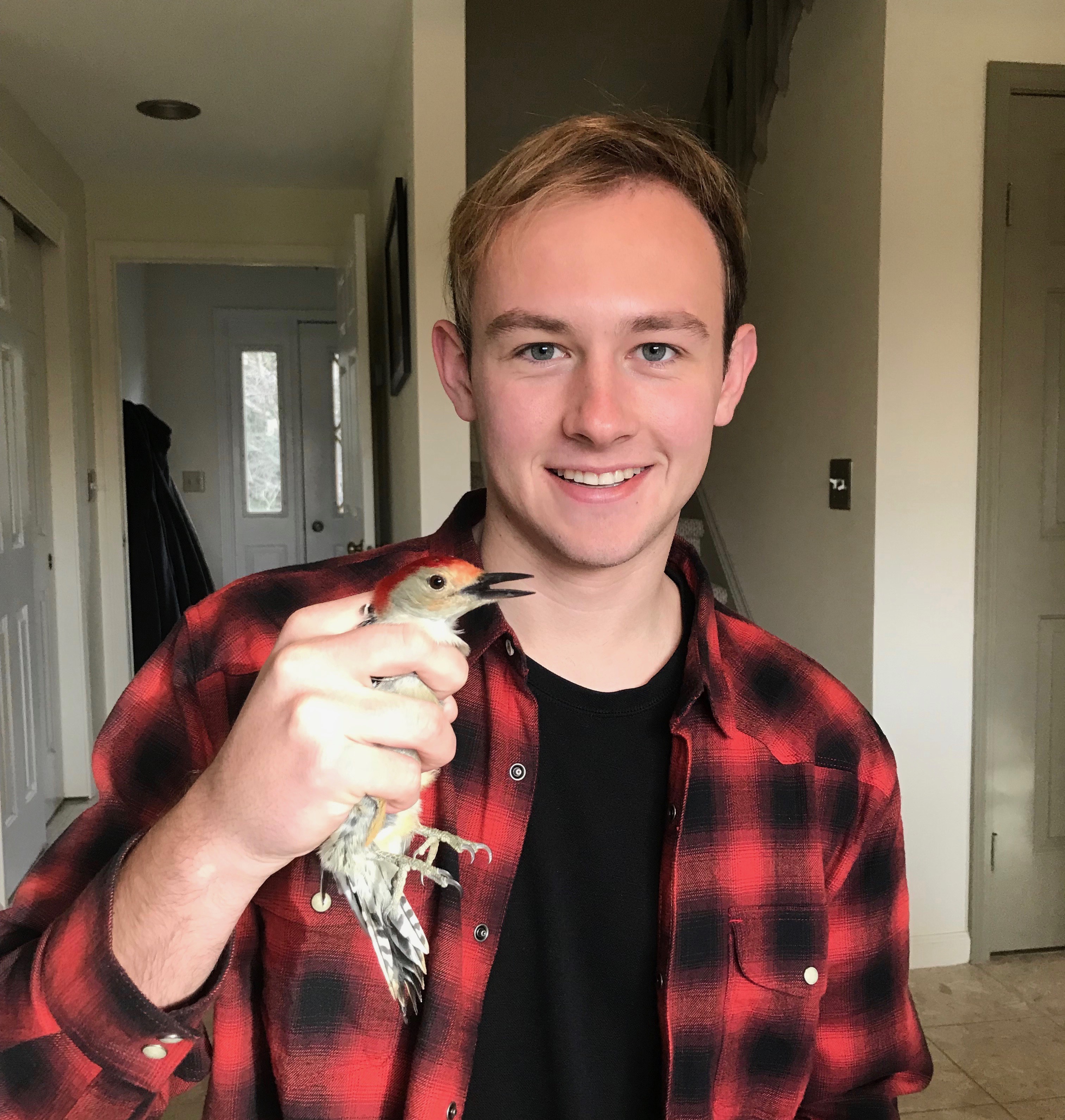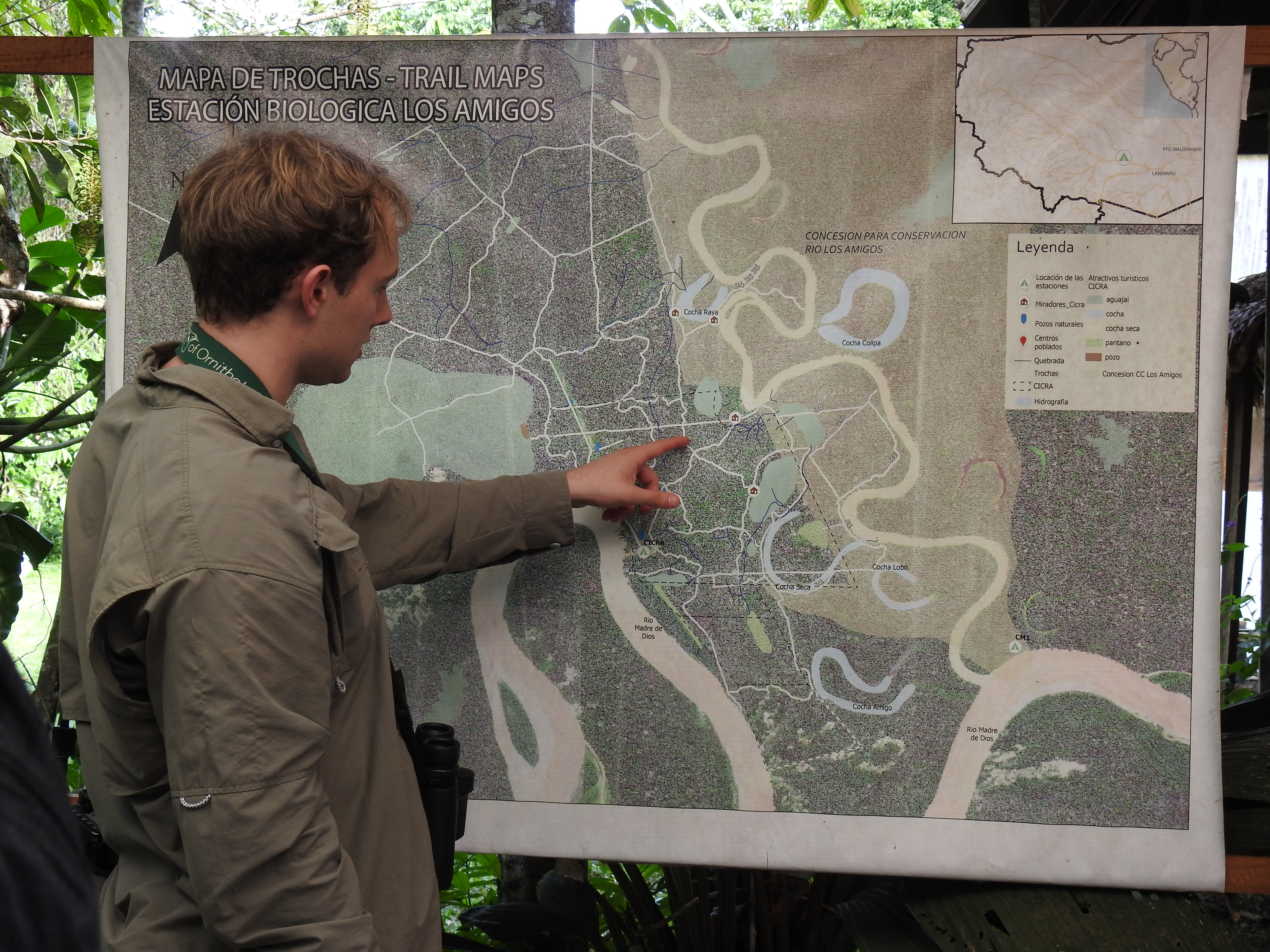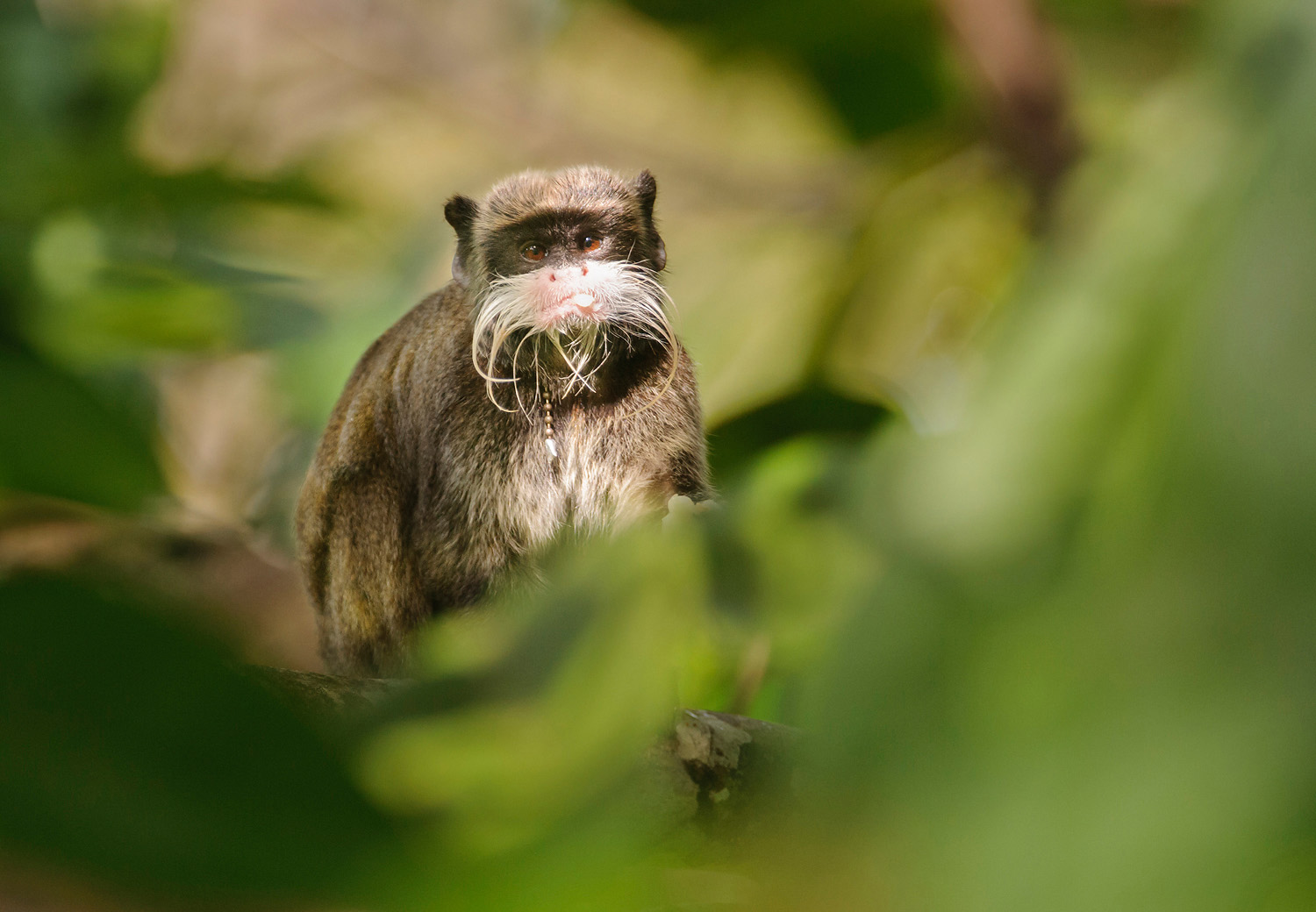Peru is home to an impressive number of birds—almost 2,000—and many of them live right in the Amazon. Even if you have already been birding in a tropical country, there are still several endemic birds that can only be found in Peru and nowhere else on the planet. The key to Peru’s bird diversity can be explained by its distinctive geography—it’s where the Andes mountains meet the lowland Amazon, and where warm ocean waters of the north meet cooler waters from the south, creating temperature variations that form both desert and dry forest. In other words, Peru is a great country for birding!
I recently led a trip of experienced birders and guides to Amazon Conservation’s three birding lodges in southeast Peru. Our trip began in Cusco, where the elevation is approximately 3,200 meters, and the vegetation is mainly dry scrub. We then visited Wayqecha in the cloud forest at 3,000 meters, passed through Manu at 600 meters, and went all the way down to 280 meters at Los Amigos. This altitudinal gradient (spanning 3,000 meters) ensures a wide variety of birds that depend on the diverse habitats found across this gradient. Over 1,000 species have been recorded here!
As a birder and researcher, seeing how a genus changes in species composition with altitude is a marvelous experience. Also marvelous is observing similar changes horizontally along the flat, lowland forest such as that found at Los Amigos. Changes in soil composition create a mosaic of habitats, some of them permanently or seasonally flooded, and the bird diversity changes within hundreds of meters into something different. This is incredible!
 There were several highlights from my trip: when tanager flocks showed up at the Andean Cock-of-the-Rock lek, watching cotingas or trogons, at the lodges’ hummingbird feeders, visiting the macaw clay lick, and more. It’s hard to pick one favorite moment, but I would choose when we finally found, after several days of searching, the Gray-breasted Mountain Toucan. It was visible through a very small and narrow opening, and the whole group of 10 people had to get organized by height (with the taller members behind) so that all were able to get great views and photos of the bird. Throughout the trip we saw endemic species such as the Marcapata Spinetail at Wayqecha, the Black-backed Tody-Flycatcher at Manu, and in between saw the Creamy-crested Spinetail and Inca Flycatcher.
There were several highlights from my trip: when tanager flocks showed up at the Andean Cock-of-the-Rock lek, watching cotingas or trogons, at the lodges’ hummingbird feeders, visiting the macaw clay lick, and more. It’s hard to pick one favorite moment, but I would choose when we finally found, after several days of searching, the Gray-breasted Mountain Toucan. It was visible through a very small and narrow opening, and the whole group of 10 people had to get organized by height (with the taller members behind) so that all were able to get great views and photos of the bird. Throughout the trip we saw endemic species such as the Marcapata Spinetail at Wayqecha, the Black-backed Tody-Flycatcher at Manu, and in between saw the Creamy-crested Spinetail and Inca Flycatcher.
So, Peru is THE place to visit if you want to see great numbers and unique birds. Staying at Amazon Conservation’s birding lodges was key to a great trip because they’re strategically located at different elevations on the eastern slope of the Andes facing the vast Amazonia. The species overlap is minimal, which ensures great bird diversity at each station. Also, food and accommodations are superb!
– Fernando Angulo (pictured above on the far left) is a researcher at the Peruvian Center for Ornithology and Biodiversity (CORBIDI), member of four specialist groups at the International Union for Conservation of Nature (IUCN), president of the Union of Ornithologists of Peru (UNOP) and author of many books and scientific articles.







Leave A Comment